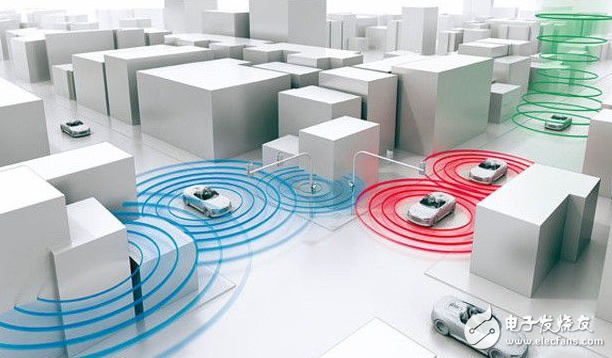Nowadays, automobiles have become the most important means of transportation in human life. Looking at the congestion on the road, if you are already in it, it is really a distressing thing. In order to solve this problem, all major manufacturers have their own tricks. They all try to use their own concepts to realize the automotive Internet of Things. For example, Alibaba.com has handed over the Internet ecology of the Ali system to the smart car field. LeTV has teamed up with BAIC Group to expand the LeTV ecosystem to the new application of the car. Scenes. But has the real Internet of Vehicles been implemented? It is also a non-existent product. Most of the existing products are the OBD interface of the vehicle as the access point for acquiring the vehicle status. It is not possible to completely obtain all the communication data of our vehicle, and the state acquisition of the vehicle is limited.

In order to break through the bottleneck and face the concept of car networking, we must boldly abandon the dependence on the previous OBD connector, but directly invade the car's main communication network to achieve a comprehensive acquisition of the state of the car, in order to achieve the most real real-time monitoring of the car, It is no longer a pseudo-vehicle network.
Let's take a look at several car bus communications:
1. Features of LIN (Local Interconnect Network) bus:
a. Easy to implement plus
b. Low cost
c. Application in situations where real-time requirements are not high
Controls such as lights, doors, seats and wipers are the areas of application. As an effective compensation for CAN networks, the biggest advantage is the low cost. The first is mainly because it adopts the UART data format, so there is no need for a separate controller, it can be implemented in software on the UART, and it has a unique clock synchronization mechanism so that the slave node can save the external crystal oscillator and only use the internal crystal oscillator of the processor. The accuracy requirements can be met, which saves money, and those low-speed control applications take the LIN bus.

2. The full name of CAN is Controller Area Network, CAN controller area network, which has become an international standard, but its chip type has reached hundreds. With high reliability and good error detection capabilities, it is widely used in automotive and embedded applications.
The physical layer and data link layer of the CAN protocol structure have been implemented by hardware, and are currently standardized, with ready-made components (CAN controllers and transceivers). Therefore, the CAN controller and transceiver are added to the MCU, and the corresponding driver is implemented by the software to realize the CAN communication function.
CAN transmission media can use twisted pair, coaxial cable or fiber.
The CAN bus allows multiple stations to transmit at the same time. This not only ensures the real-time processing of information, but also enables the CAN bus network to form a multi-master system, which ensures the reliability of the system. In addition, CAN adopts short frame structure, and each frame of information has checksum and other error detection measures to ensure real-time data and low transmission error rate.
3. FlexRay is a new type of communication communication protocol that spreads faster than CAN and LIN and has higher reliability, but it is also more expensive. Disadvantages of FlexRay: Its electrical characteristics result in limited network length.
FlexRay's actual products are only used in BMW, Audi, and Mercedes. At the end of 2009, the alliance of FlexRay was dissolved.
4.MOST, Media Oriented System Transport, mainly used for transmission between in-vehicle infotainment systems. Its transmission medium is optical fiber, so the bandwidth is high. A single fiber can transmit multiple signals. The disadvantage is that the cost is high and the wire harness structure will There is a requirement (the turning curvature cannot be too large), and the topology of the MOST is a ring token network. If a single point of failure occurs, the entire network will be affected.
MOST is a proprietary protocol developed by MOST CooperaTIon and supported by OEMs including Ford, BMW, Daimler, and GM. Its use requires authorization, payment of patent fees, etc.
It can be seen from the above that the car bus has many forms of implementation, but the performance characteristics of the CAN bus have made it a victory in this turbulent situation, which is the most used car bus network for many car manufacturers. Therefore, to achieve a real large-scale car networking, then the CAN Internet has become a top priority.
Smart Bms,Bms For Battery,Bms For Lithium Battery,Bms Module
HuiZhou Superpower Technology Co.,Ltd. , https://www.spchargers.com
